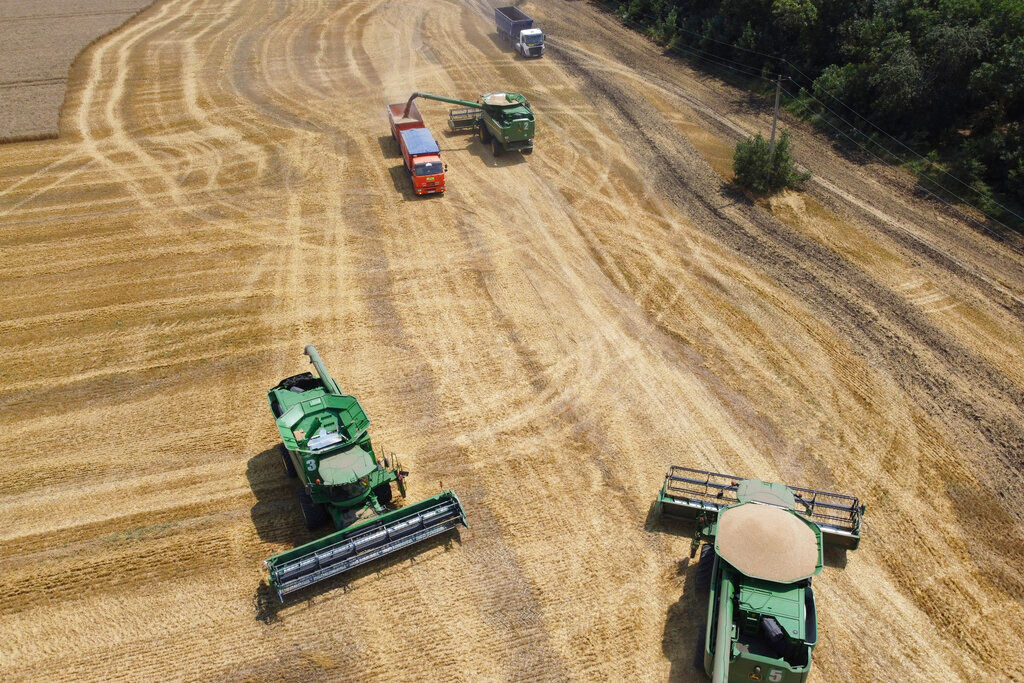Ukraine and Poland reached a historic agreement to work on joint border customs control, and a shared railway company to ease the movement of people and increase the export potential of the war-torn nation.
“The Polish-Ukrainian border should unite not divide”, Polish President Andrzej Duda said in Ukraine’s Parliament, becoming the first foreign leader to give a speech there in public since Russian counterpart Vladimir Putin sent troops in on February 24.
Ukraine’s president Volodymyr Zelensky touted this as a “revolutionary” move, in his nightly address. He added, “This will significantly speed up border procedures”.
Ukraine’s Infrastructure Minister Oleksander Kubrakov added that the two nations are working on easing the transportation of goods from the war-torn country into the European Union.
Also Read | China is ‘flirting with danger’: Joe Biden says United States will defend Taiwan if invaded
“We are also working on the creation of a joint venture railway company to increase the export potential of the Ukrainian economy”, he said in a statement.
This decision, of course, will impact the nation’s export of wheat, which is expected to alleviate Ukraine’s economic conditions and allow the global grain crisis a collective sigh of relief.
Since the war began, Ukraine has had a lot of wheat in silos, unable to leave the nation, with Russia having taken control over its Black Sea ports. With Mariupol falling, the Azov Sea is out of the question too, leaving Ukraine with trains, trucks, and small ports on the Danube River, to export wheat and grain. Amid a surge in global prices, with the issue being compounded by India’s decision to ban wheat export, the executive arm of the EU has been searching for a viable solution.
Also Read | Russian troops start clearing mines from Ukraine’s Azovstal steel plant
For now, trains appear to be the best option – since they can get the grains quickly to Ukraine’s borders with friendly neighbours. Thereon, international ports can be used to export Ukraine’s grain to different parts of the world.
However, a major challenge to get the 25 million tonnes of grains out has been Ukraine’s railways and the mismatch with other European countries. The nation operates on a different track gauge. Defined as the distance between two rails, Ukraine’s track gauges are wider (1.52m), compared to other European gauges, (1.435m). This is due to Ukraine’s time as part of the USSR and its subsequent sharing of Russian track specifications.
Further, there’s a deadline for getting Ukraine’s grains out, since the nation has planted 7 million hectares of crops for the summer harvest. Considering its silos are full unless Ukraine can get its grains out, it can’t harvest the new crops, deepening the world’s food crisis.
Also Read | Amid invasion, here’s why Ukraine Parliament banned Russian war symbols
Warsaw had already been considering investors to build a dry port at the border between Ukraine and Poland. Currently, there is a bottleneck there, since Poland has a different track gauge, necessitating the grains to be unloaded from Ukrainian wagons and reloaded onto ones suited for the neighbour’s railway system.
A dry port would combine both gauges, allowing freight trains to unload swiftly. Once inside Poland, the best option would be to use the Gdynia and Gdansk ports on the Baltic Sea.
Informall, an Odesa-based consultancy noted, “Transport stakeholders consider Polish ports an alternative gateway for Ukrainian ocean containers and various crops. Exports of crops are an essential part of the Ukrainian economy, as well as important for many consumers abroad”.
Also Read | Indian doc stuck in Ukraine builds bomb shelter worth Rs 80 lakh for his pets
While the new setup is likely to spell relief for Ukraine’s wheat exports, Zelensky is hopeful it’ll also ease the country into the EU.
He said, “It is also the beginning of our integration into the common customs space of the European Union”.







